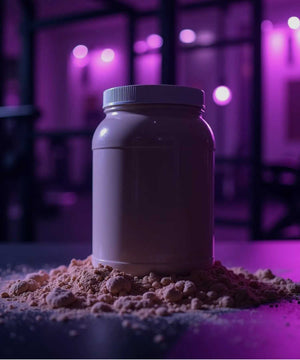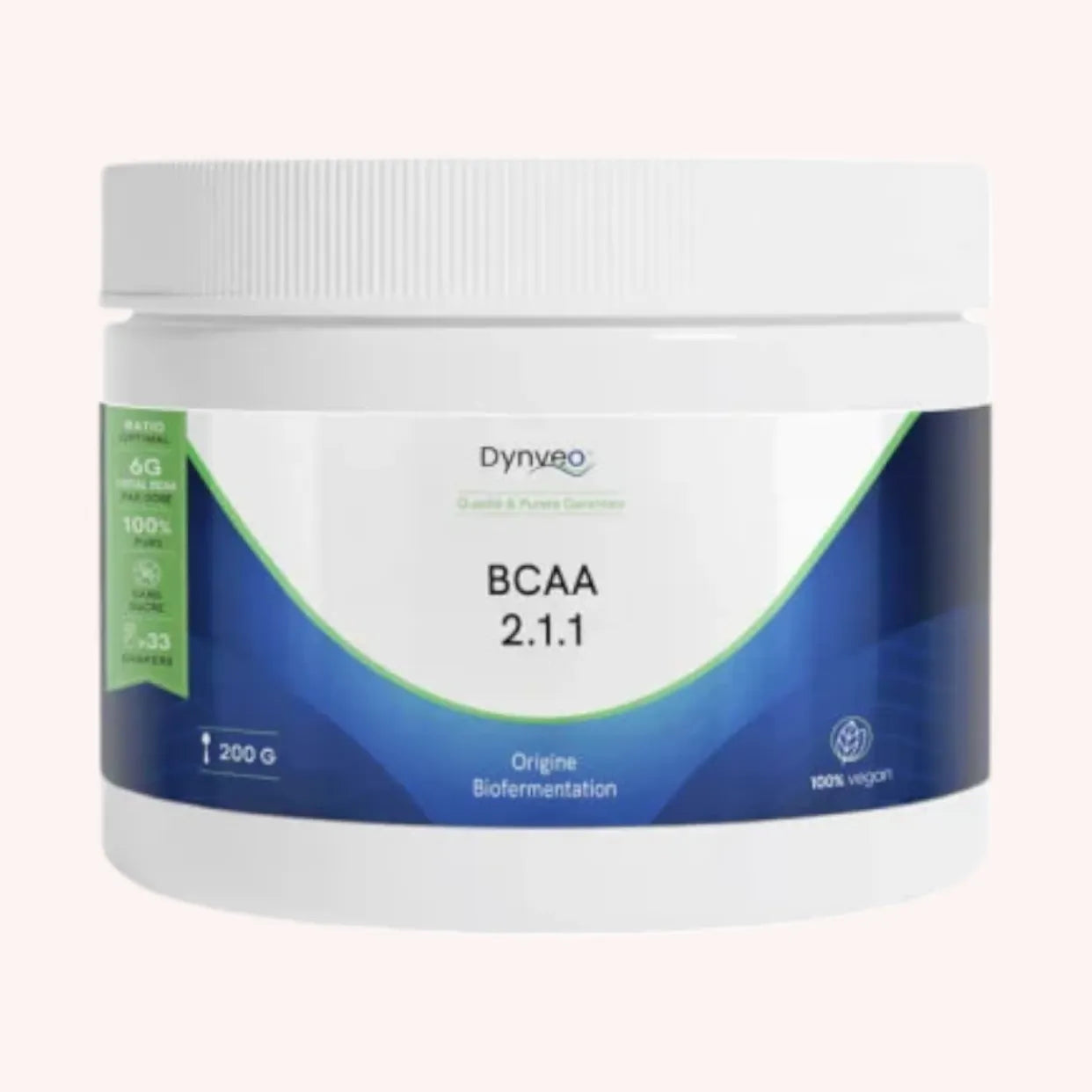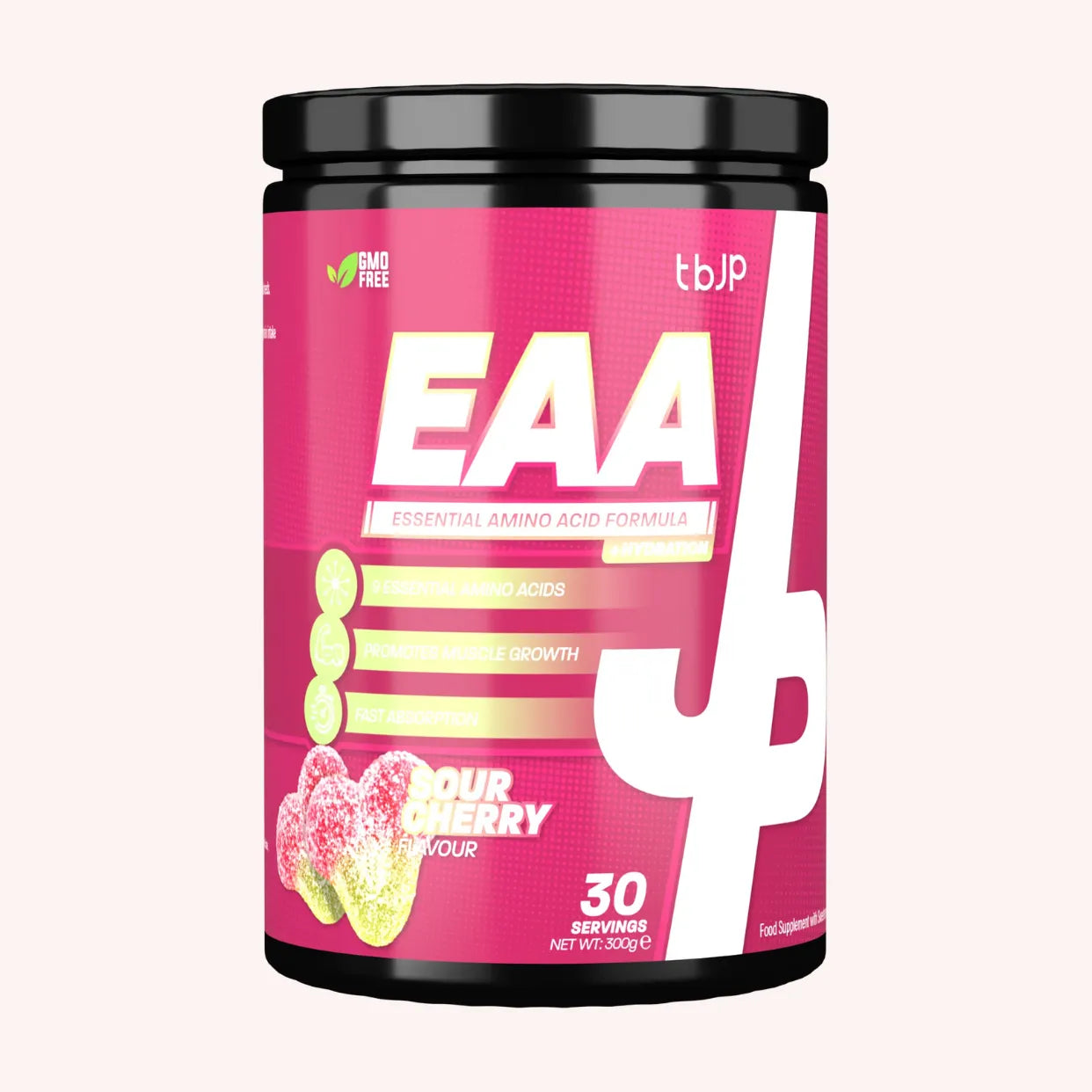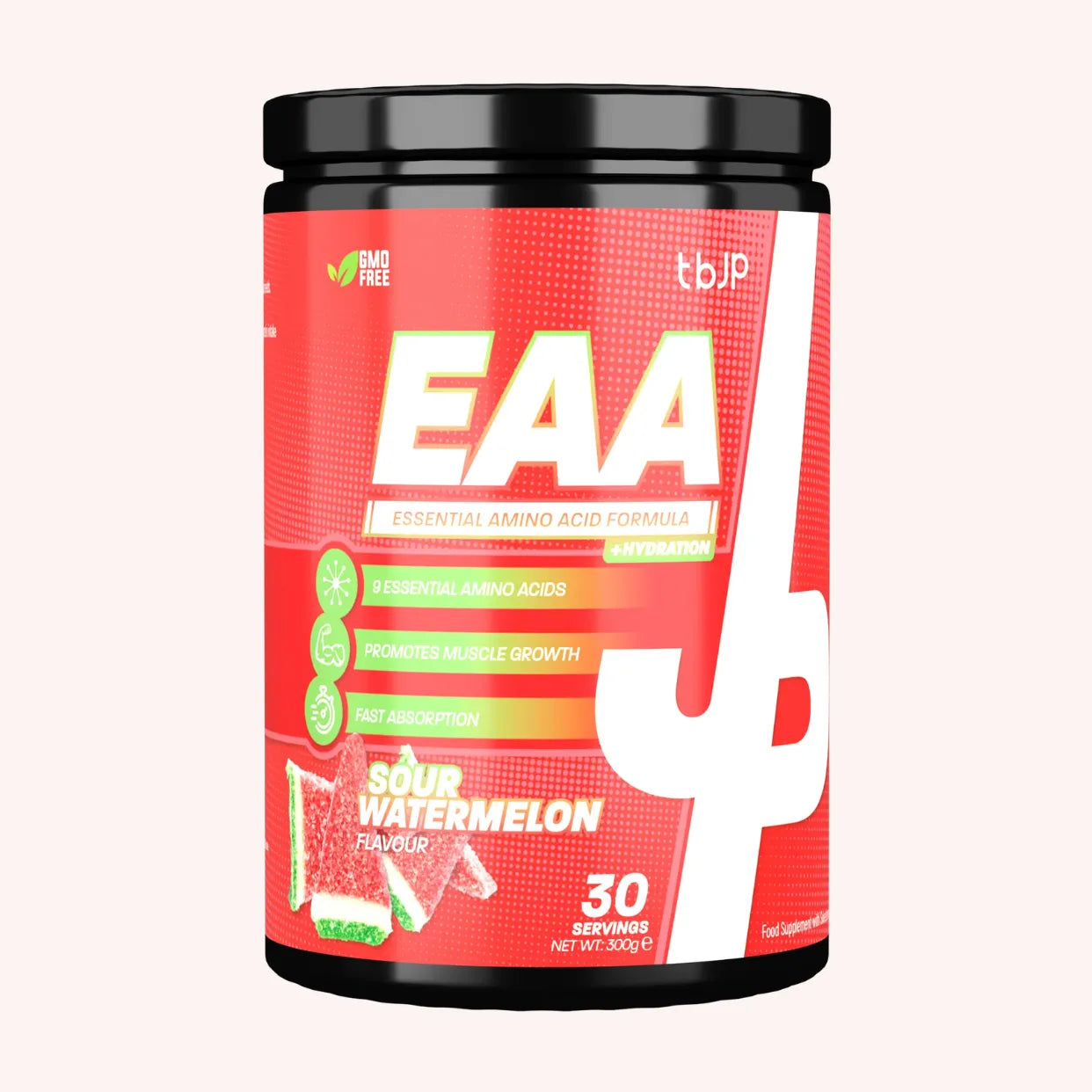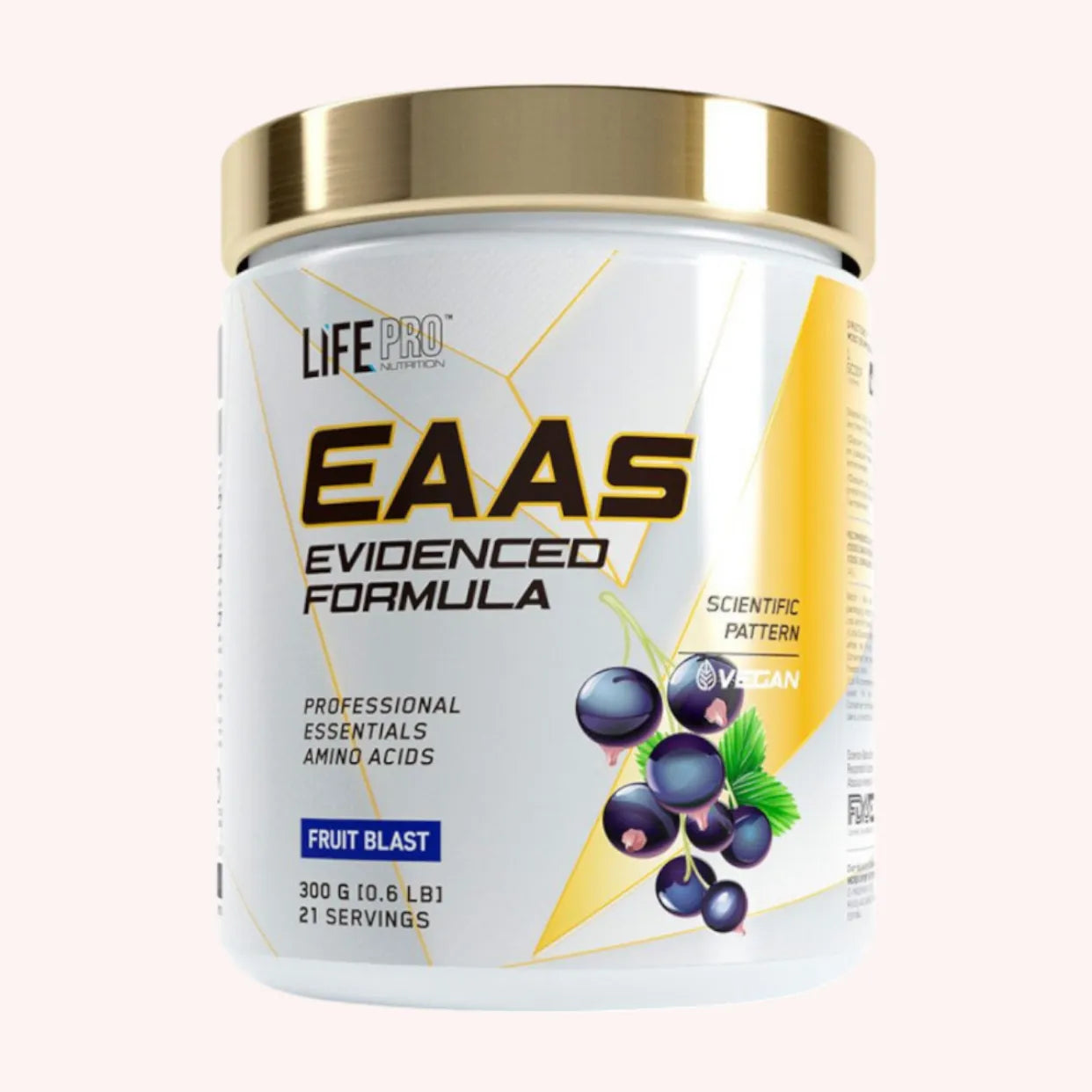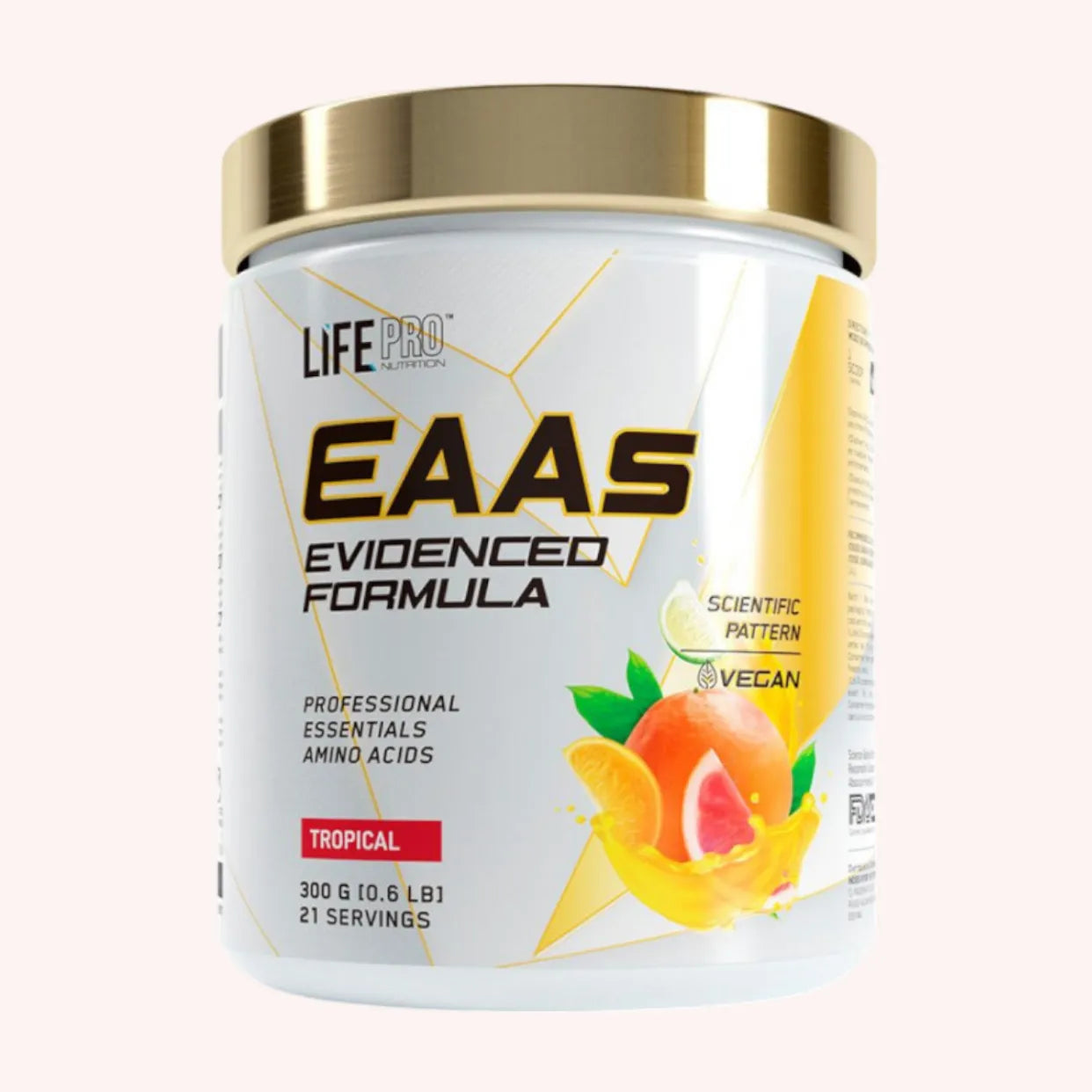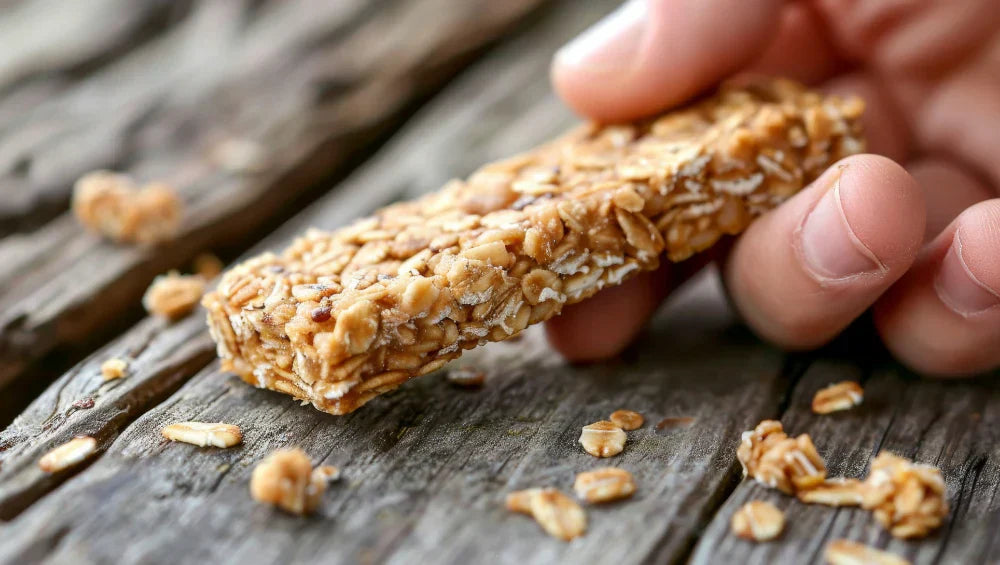In the world of bodybuilding, results depend not only on training intensity, but also on nutrition and recovery. Among the essential elements for maximizing your performance, amino acids occupy a central place. These organic molecules are the building blocks of muscle proteins and play a crucial role in muscle repair and growth after exercise.
In this article, we'll explore in detail what amino acids are, their important role in muscle recovery , and muscle growth . We'll also cover the differences between BCAAs and EAAs , as well as how best to incorporate them into your diet and supplementation to maximize your bodybuilding results.
What are amino acids and why are they crucial for bodybuilding?
Amino acids: The essential building blocks of muscles
Amino acids are organic molecules that play a key role in many biological processes. They are the building blocks of proteins , which in turn are essential for the construction , repair , and function of body tissues, including muscles .
The human body has 20 different types of amino acids , which are classified into two broad categories: essential amino acids and non-essential amino acids .
- Essential amino acids: These are those that the body cannot synthesize on its own. They must therefore be obtained through diet or supplements. Essential amino acids include leucine , valine , and isoleucine , which are particularly important in bodybuilding.
- Non-essential amino acids: These can be produced by the body from other sources in the body, such as carbohydrates or fats. They also play an essential role, but do not need to be consumed directly in the diet.
The role of amino acids in the human body
Amino acids don't just build muscle protein; they perform a multitude of vital functions in the body. They are involved in hormone production , tissue repair , neurotransmitter synthesis , and immune response . They are also involved in regulating cellular energy , helping to maintain a healthy metabolism.
- Recovery Support: After an intense workout, muscles experience minor tears. Amino acids, especially BCAAs (branched-chain amino acids), play a direct role in promoting muscle repair and reducing catabolism, which is the breakdown of muscle. This helps speed up muscle recovery .
- Maintaining Nitrogen Balance: Amino acids play a key role in the body's nitrogen balance, which is essential for protein synthesis and muscle mass preservation. Inadequate amino acid intake can disrupt this balance and lead to muscle loss.
Types of Amino Acids in Bodybuilding: BCAAs and EAAs
BCAAs: A trio of essential amino acids for performance
BCAAs (Branched-Chain Amino Acids) are composed of three essential amino acids: leucine, valine, and isoleucine. Each of these amino acids plays a specific role in muscle performance, recovery, and growth.
- Leucine: Leucine is arguably the most crucial of the three BCAAs, as it plays a central role in muscle protein synthesis . It activates a signaling pathway called mTOR (mechanistic target of rapamycin), which is a key trigger for the production of new muscle protein. This stimulates muscle growth and accelerates fiber repair after exercise. In other words, leucine directly initiates the muscle rebuilding process, an essential element for post-workout recovery.
- Valine: Valine is actively involved in muscle tissue repair and helps build muscle . It also plays a role in maintaining muscle mass by reducing muscle breakdown during exercise, which promotes optimal recovery.
- Isoleucine: Isoleucine is a direct source of energy for muscles during exercise. It also helps regulate blood sugar levels, which helps maintain endurance and prolong exercise, while reducing muscle fatigue.
EAAs: Why are they essential for your training?
EAAs (Essential Amino Acids) include not only BCAAs (leucine, valine, and isoleucine), but also a host of other amino acids essential for optimal muscle function. EAAs include amino acids such as lysine , methionine , phenylalanine , threonine , histidine , and tryptophan , each of which plays a specific role in protein synthesis and muscle recovery.
- Lysine: Lysine is crucial for muscle repair and regeneration because it supports the formation of collagen, which is necessary for the structure of muscles and connective tissues.
- Methionine: This amino acid is important for detoxification of the body and plays a key role in protein synthesis , especially in muscles.
Key differences between BCAA and EAA:
| Criteria | BCAA (Branched-Chain Amino Acids) | EAA (Essential Amino Acids) |
| Composition | Composed of 3 essential amino acids: Leucine, valine, isoleucine. | Composed of 9 essential amino acids, including the 3 BCAAs as well as additional amino acids like lysine, methionine, and phenylalanine. |
| Specific role | Stimulate protein synthesis and reduce muscle breakdown during exercise. Leucine plays a key role in muscle growth. | Necessary to ensure complete muscle repair and optimize recovery after training. |
| Source and supplementation | BCAAs can be taken alone to maximize performance during training, reduce fatigue and speed recovery. | EAAs, with a full spectrum of essential amino acids, are ideal for supporting protein synthesis, muscle repair and maintaining nitrogen balance. |
Why choose EAA or BCAA for your training?
If your primary goal is to improve your immediate performance during training and reduce muscle breakdown, BCAAs are often sufficient, especially if you already eat a balanced, protein-rich diet. However, if you're looking for complete recovery and optimized muscle growth , EAA supplementation may be beneficial, as it ensures all the amino acids needed for protein synthesis and muscle repair are present.
Ultimately, the choice between BCAAs and EAAs will depend on your specific bodybuilding goals, but both types of amino acids are important for maximizing performance , recovery , and muscle growth .
The role of amino acids in muscle recovery and performance
Intense training, especially in bodybuilding, places considerable stress on muscles. In response, they experience micro-tears which, while normal and necessary for muscle growth, require an effective repair process to allow muscles to rebuild stronger and more resilient. Muscle recovery is therefore a crucial step that determines not only long-term performance, but also the ability to progress in terms of strength and muscle mass .
Amino acids play a key role in this recovery by providing the essential building blocks for muscle protein . After training, the body uses amino acids to repair and rebuild damaged muscle fibers. Supplementing with BCAAs (Branched-Chain Amino Acids) and EAAs (Essential Amino Acids) can speed up this process, reducing the effects of post-exercise muscle soreness and allowing for a faster return to training .
How to incorporate amino acids into your bodybuilding diet?
The best natural sources of amino acids
Amino acids are essential for muscle growth and repair, and they can be obtained from a variety of dietary sources. Animal proteins are among the best sources of amino acids because they contain all the essential and non-essential amino acids in ideal proportions for the body. They are found in foods such as:
- Meats (beef, chicken, turkey, etc.)
- Fish (salmon, tuna, mackerel, etc.)
- Eggs
- Dairy products (milk, cheese, yogurt, etc.)
These animal sources are particularly effective for bodybuilders because they contain high-quality protein and are easily digested by the body.
For vegetarians or those looking to reduce their consumption of animal products, there are also plant-based sources of protein, such as:
- Legumes (lentils, chickpeas, beans, etc.)
- Tofu and soy products
- Quinoa , which is a complete protein, containing all the essential amino acids
- Nuts and seeds (almonds, chia seeds, pumpkin seeds, etc.)
However, it's important to note that some plant foods don't provide all the essential amino acids in sufficient amounts. For example, while legumes are an excellent source of protein, they often lack certain essential amino acids like methionine . Therefore, vegetarians and vegans are advised to combine several sources of plant protein (e.g., combine beans and rice) to cover all amino acid needs.
Supplementation: When and how to take amino acids?
Although you can get a large portion of your amino acids through diet, supplementing with BCAAs (Branched-Chain Amino Acids) and EAAs (Essential Amino Acids) can be beneficial in maximizing your results, especially if you're looking to optimize muscle recovery and accelerate muscle growth .
When to take amino acid supplements?
- Pre-workout: Taking BCAAs or EAAs before your session can be beneficial in preventing muscle breakdown during training. This can be especially helpful for long or intense sessions where muscle fatigue sets in quickly.
- During training: If you are training for a long period of time or performing prolonged efforts (e.g., very intense strength training sessions or fasted cardio workouts), you can consume amino acids during exercise to maintain optimal energy levels and prevent muscle breakdown.
- Post-workout: The post-workout period is crucial for muscle recovery and protein synthesis . Consuming whey protein , which is rich in BCAAs, after exercise helps stimulate muscle regeneration and promote the repair of damaged muscle fibers. It also helps reduce post-workout muscle soreness and promotes a positive nitrogen balance , which is conducive to muscle growth. While whey protein can help reduce post-workout muscle soreness, a combination of factors like rest, hydration, and overall nutrition also play an important role in the recovery process.
How to take amino acid supplements?
BCAAs and EAAs are available in various forms, such as powders or ready-to-drink drinks . Powdered forms are often preferred because they allow for quick and easy absorption. To maximize the effectiveness of supplementation, it is recommended to follow the manufacturer's dosage instructions, which vary depending on the product.
A common approach is to take about 5 to 15 grams of BCAAs or EAAs . Remember that these supplements should complement a balanced diet, not replace it.
In summary, to maximize the benefits of amino acids in your bodybuilding diet, it is essential to combine quality natural food sources with strategic supplements before, during, and after training. This approach will allow you to promote optimal recovery , reduce the risk of muscle catabolism , and improve your long-term performance .
Conclusion: The Importance of Amino Acids for Bodybuilding and Recovery
Amino acids , whether in the form of BCAAs or EAAs , are essential for muscle growth , muscle repair , and reducing fatigue after training. To maximize results, a balanced diet is essential. Animal proteins are excellent sources of BCAAs and EAAs .
BCAA or EAA supplementation can also be beneficial, especially for optimizing recovery and performance, but it should complement a healthy diet , not replace it. By incorporating these into your bodybuilding program, you will not only be able to increase muscle mass , but also improve your physical performance .
Sources:
- Kamei, Y., Hatazawa, Y., Uchitomi, R., Yoshimura, R., Miura, S. (2020). Regulation of Skeletal Muscle Function by Amino Acids. Nutrients, 12(1), 261. DOI: https://www.mdpi.com/2072-6643/12/1/261
- Shimomura, Y., Kitaura, Y. (2018). Physiological and pathological roles of branched-chain amino acids in the regulation of protein and energy metabolism and neurological functions. Pharmacological Research, 131, 90-100. DOI: https://www.sciencedirect.com/science/article/abs/pii/S1043661817312598?via%3Dihub
- Kelly, B., Pearce, E.L. (2020). Amino Assets: How Amino Acids Support Immunity. Cell Metabolism, 32(6), 793-804. DOI: https://www.cell.com/cell-metabolism/fulltext/S1550-4131(20)30311-9?_returnURL=https%3A%2F%2Flinkinghub.elsevier.com%2Fretrieve%2Fpii%2FS1550413120303119%3Fshowall%3Dtrue



